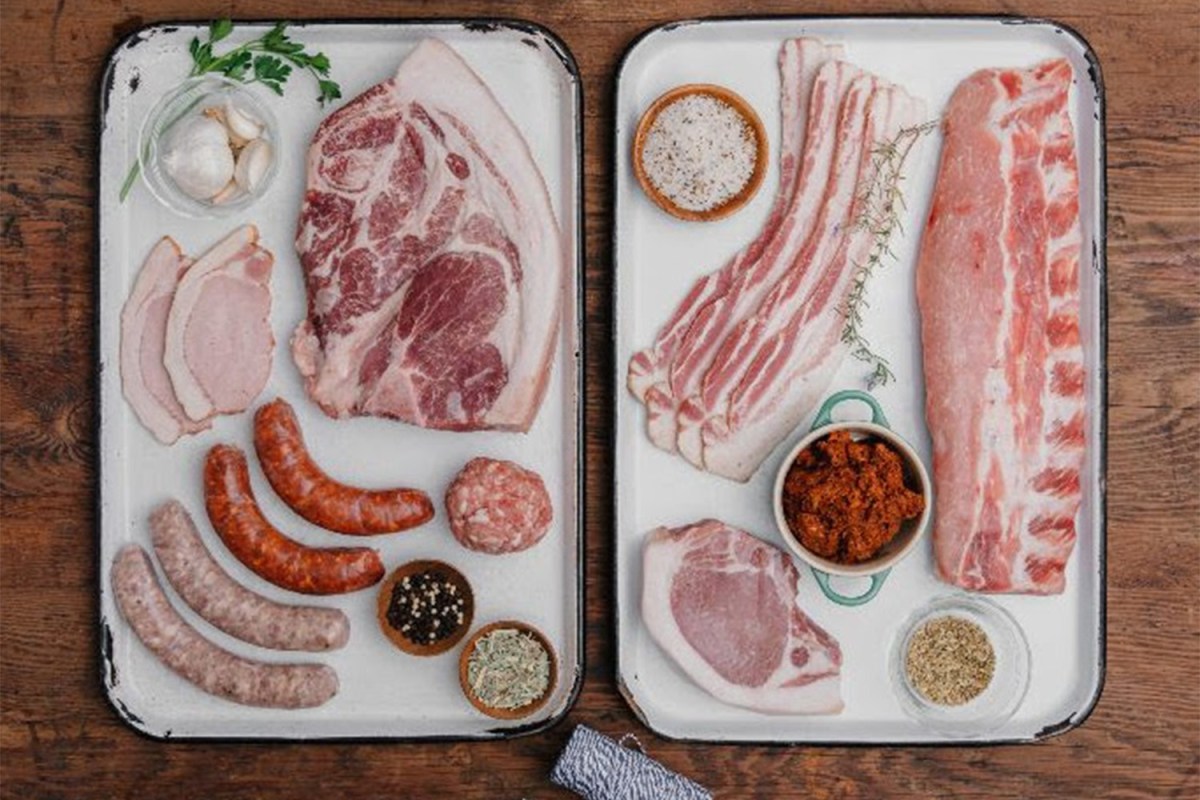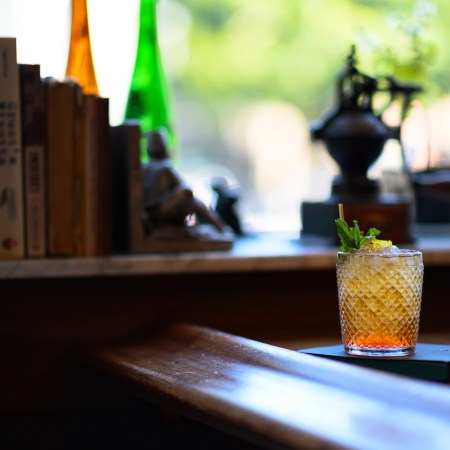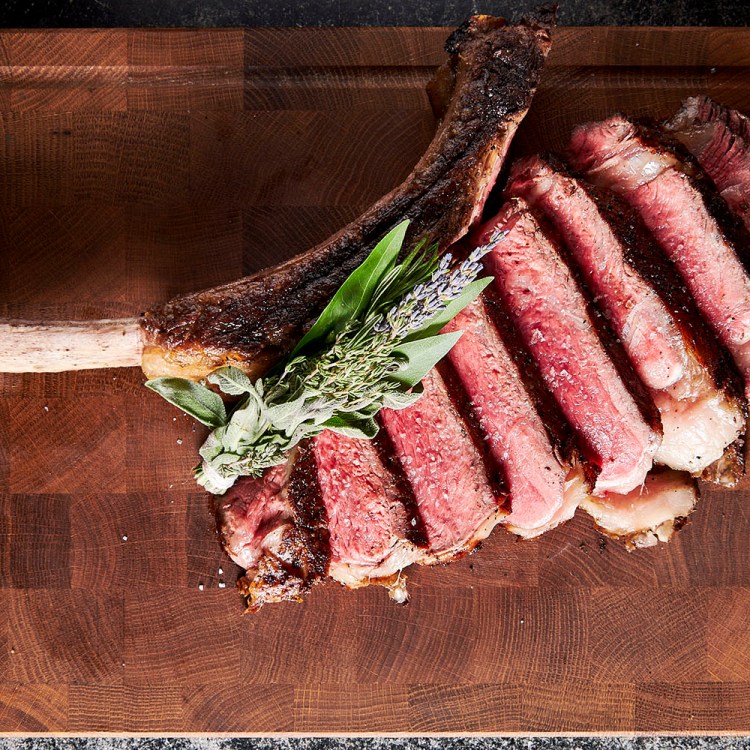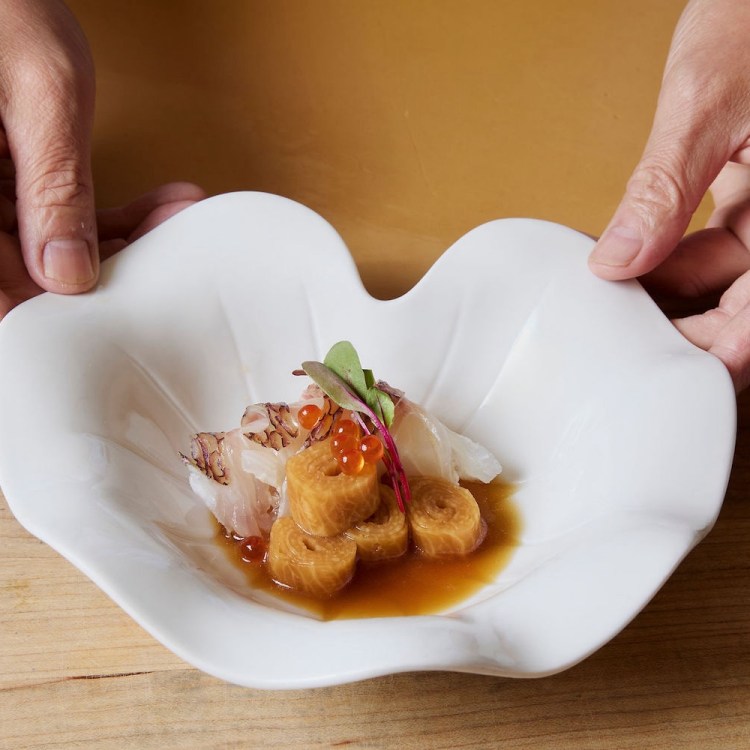If you’re planning on throwing the same-old selection of hot dogs and burgers on the grill this summer, please stop what you’re doing and listen to Charlie Thieriot. The sixth-generation owner of Chico’s Rancho Llano Seco is spending his grilling season dreaming, instead, about sustainably raised pork shoulder steaks, a chorizo you’ve never heard of and more.
Founded in 1861, Rancho Llano Seco has long been a bastion of ethical and sustainable livestock husbandry and conservation. Today, the Rancho produces fields of heirloom beans and grains, 750 acres of black walnuts, pastured cattle and GAP-certified free-range hogs. And some extremely delicious pork.
The key, for Thieriot, is ensuring that his pigs’ lifestyle is as natural and instinctual as possible — a keen departure from the norm in the U.S.
“In this kind of race to produce as much food as we can, as cheaply as we can, the sad victim has been the pig more than any other creature,” he says. “They’re so clever and also so tough, and their toughness has allowed them to be raised in these harsh environments, where they’re just packed cheek-to-jowl inside of concrete their whole life. That’s the majority of pork production.”
Despite being a pig farmer, he says he’s “ethically much closer to someone who has issues with the general meat system” — including those who have protested his production.
“Funnily enough, they see us as kind of a gateway drug,” he says. “Like I could turn a vegan more easily than some big commodity producers. Maybe they’re right! But I think that how animals are treated is terrible, and that’s someone from within the industry.”
His pigs stand out in many ways, beginning with where they live.
“I think the key thing for pigs is that they get to root, to dig around in the dirt,” he says. “All their senses are in their snout, and rooting around is part of their genetic mandate in life, just kind of what they do to be who they are.”
Thieriot also raises his pigs longer than most — about a month more than the nationwide average of about five months.
“A lot of good stuff happens in that month,” he says, noting that the resulting pork isn’t just more flavorful with better marbling, but it even boasts a higher pH due to the low-stress lifestyles of the hogs.
Thieriot thinks holistically about his pork, with a keen love of offal, blood sausage and lard stemming in part from his Argentinian heritage. He notes that while the farm has received incredible support from local chefs, part of his job remains championing these secondary cuts to ensure that none of this luscious meat is wasted. And with the arrival of summer, he’s specifically hard at work thinking of ways that pork can find its way onto your grill. Here are a few of his favorite tips.
InsideHook: A lot of grilling recipes call for treating pork chops like chicken breasts. Do you think of pork as “the other white meat?”
Charlie Thieriot: No, no! It’s funny — I haven’t even heard that phrase in a long time. The trajectory of nutrition in general has been a great thing for pigs, in a way. From this idea that fat is bad, which is what kind of pushed the skinless chicken breasts craze, I think people are kind of coming to their senses, and they’re realizing that sugar and certain types of carbohydrates are really bad for us, but that vegetables and certain fats are really great for us. In a way, pigs are part of this new trend around things like the keto movement, or just like low-glycemic thinking. The pork industry kind of chasing the chicken industry to become “the other white meat” was one of those things from that time, where we thought we were so clever, and we thought we had it figured out. That’s when we thought bagels were healthy. And I love bagels, but they’re not health food, right?
Got it — so pork is not white meat. Are there any other common misconceptions around pork among American consumers?
The obvious one for me is: don’t overcook your pork. Which comes from the fear of trichinosis, because our parents were all so worried about it. Fifty-plus years ago, a lot of pigs were raised on pastures, and in the woods, essentially. It was a cost-saving thing. This concept of pigs roaming around on green pastures is just totally anthropomorphizing them. They don’t need grass. They’re not ruminants. They’re monogastric — just like humans. They basically need the same nutritional balance that we do. But way back in the day, we would raise animals out in the woods, and if a pig had a cut in its foot or something, for example, or some open wound, they could get trichinosis. But there hasn’t been a case for over 50 years.
So it’s safe to cook your pork to medium-rare?
You definitely don’t want to overcook a pork chop, because it becomes like a hockey puck. I think that’s what a lot of people grew up with. And then that whole concept that you were talking about earlier, “the other white meat,” that’s just exacerbated the problem. Because the genetics and everything was just moved to: “OK, how do we make the leanest possible pig?” Take all the fat out of it. And not only do you overcook it, but it also has no fat on it. So I think people try our pork, and they’re like, “Oh, man, this is not like what I’ve ever had before.” I mean, it’s not gamey — it’s just got a really smooth, delicious taste. That’s largely because of the way that we feed them. But it’s just so juicy. And the pork chops are a real change in direction from most pork chops.
What other cuts are you excited about grilling this summer?
Ribs are awesome and easy. And you can have a lot of fun seasoning them. And then sausages should obviously be at every barbecue, in my opinion. But full disclosure? People are stuck in ruts in terms of cooking certain cuts at certain times of year, and it wreaks havoc on the ranchers. Shoulders, for example, are more popular in the winter. But the Mexican-Californian community has an incredible recipe, where you cut pork shoulder incredibly thin, and then you marinate it in beer. And so as we were kind of experimenting with how to sell more pork shoulder in the summer, this was one of the recipes we came across: Thinly sliced pork shoulder marinated in different salty seasonings and in beer, and then thrown right on the grill. And you can let it cook for quite a while; you don’t have to worry about overcooking it. And it’s got this dark red meat. It’s just really fun, and it looks really great on the grill, and it’s just a change-up for people who are tired of maybe just doing burgers and hot dogs.
So it’s kind of a steak stand-in?
And inexpensive! We’re way more expensive than your conventional pork, in part because of the time, essentially, that it takes to raise our animals, and what we feed them. But even with that, it’s way cheaper than most beef steaks, even ones raised in terrible conditions. So I think it’s an awesome option.
When you’re grilling pork at home, what’s your go-to?
We eat so much pork, so there’s a lot to be excited about, but I love our Basque chorizo sausage. That’s very much of a place. A lot of Basque immigrants moved to the area where our ranch is near Chico and worked as shepherds. There are still some fields on the property called Camp Three, Camp Two — basically different camps where the shepherds would camp out with the sheep. And they’d have these incredible meals out on the range. And I love this Basque chorizo, it’s really garlicky. I think that when people see the word chorizo, they’re like, oh, that’s gonna be Mexican chorizo — which is great too! But it’s not the same. This is more of a delicious, garlicky sausage. It’s perfect for the grill.
This article was featured in the InsideHook SF newsletter. Sign up now for more from the Bay Area.
























